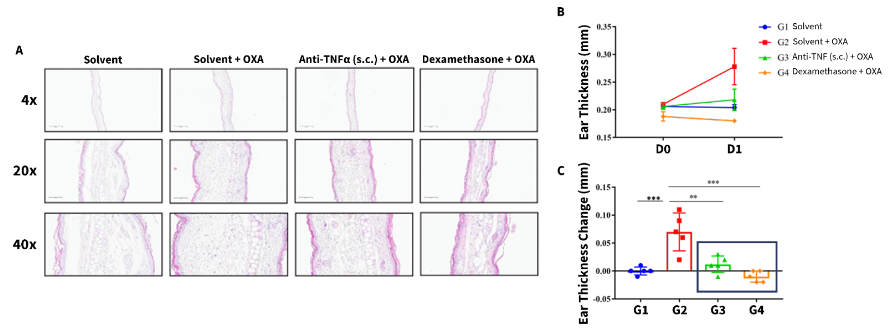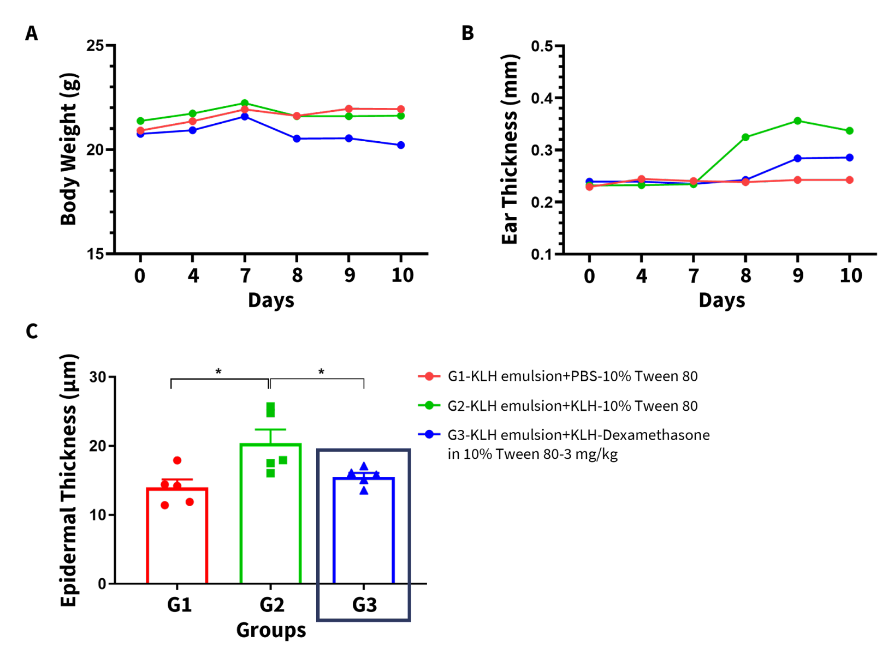Allergic contact dermatitis is a type 4 or delayed-type hypersensitivity response caused when an individual’s immune system reacts to a small molecule that contacts a sensitized skin area. The resulting antigen-specific T cell mediated response triggers a cytokine-induced proliferation process that in turn creates a localized inflammatory response. In addition to using OXA to chemically induce skin lesions, we also established a model using keyhole limpet hemocyanin (KLH), which is a large copper-containing protein that is a highly immunogenic T-cell dependent antigen. Like our OXA model, skin lesions are chemically induced using KLH beginning with a sensitization period on day 0, followed by a challenge on a later date.
Model Build

Mouse strain: C57BL/6
-
Efficacy Evaluation in OXA-Induced DTH Mice
-

Ear swelling responses were analyzed by immunohistochemistry as shown in panel A. Particularly, change in ear thickness was significantly reduced in 1% OXA-induced DTH mice treated with either an anti-TNFalpha antibody or dexamethasone compared with the OXA only group (B, C). Values are expressed as mean ± SEM. **p<0.01, ***p<0.001.
-
Efficacy Evaluation in KLH-Induced DTH Mice
-

Dexamethasone alleviates KLH-induced DTH phenotypic symptoms in C57BL/6 mice. Body weight (A), ear thickness (B), and epidermal thickness (C) in KLH-induced DTH mice. Values are expressed as mean ± SEM. * p<0.05.



